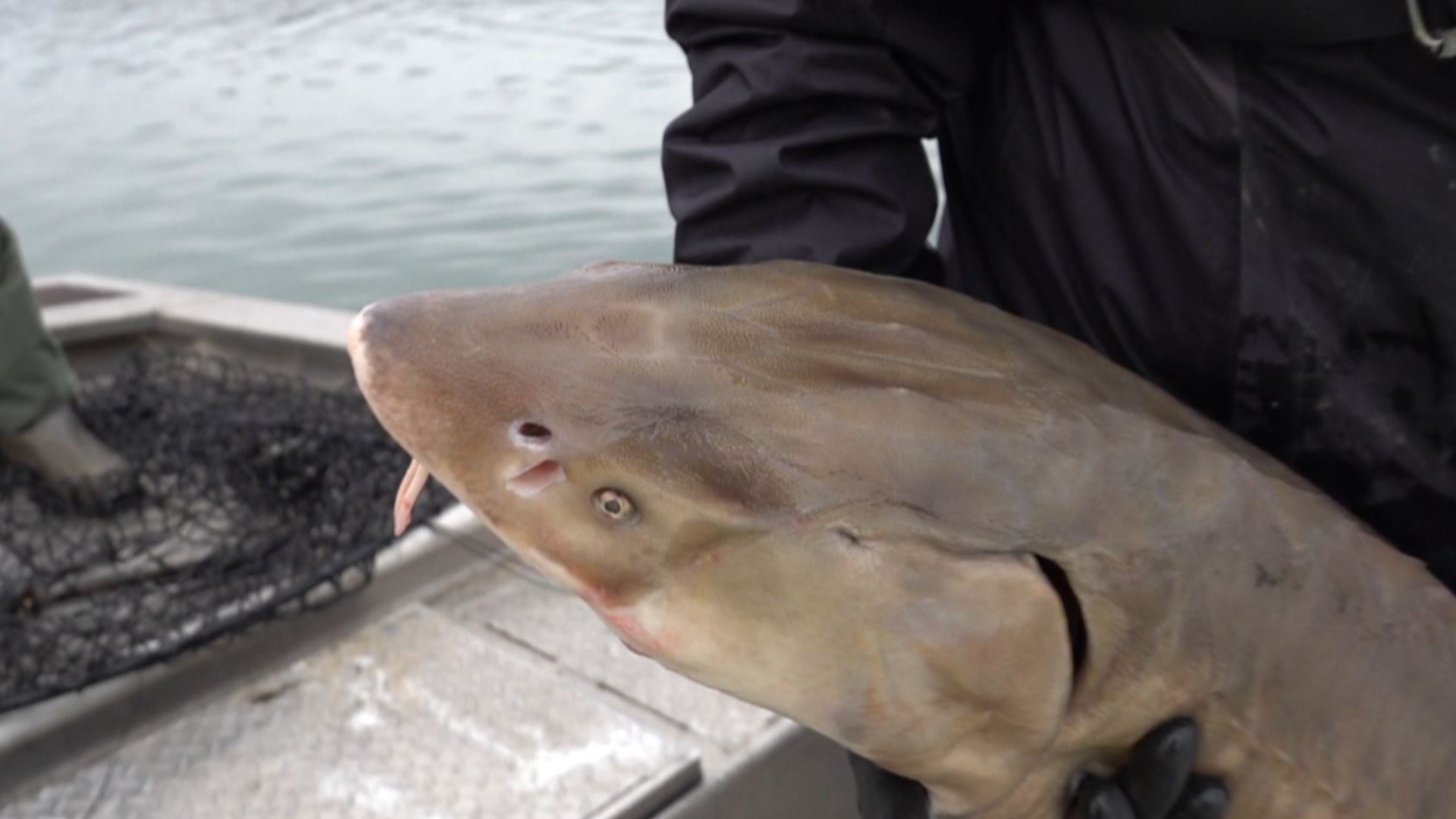KINGSTON, Tenn. — If you cast your line into the Clinch or Tennessee rivers these days, you might be lucky enough to hook a rare lunker straight out of the Cretaceous Period!
Just 21 years ago, though, that catch would have been an impossibility.
The mighty lake sturgeon continues to mount a comeback in East Tennessee after vanishing from our waters several decades ago, and it makes anglers and environmental experts alike pretty excited. Lake sturgeon are an endangered and protected species in Tennessee, so fishing one up right now means "catch and release," but this could change in the future.
Teams with the TVA, TWRA, U.S. Fish and Wildlife Service, and the University of Tennessee have gone out on yearly sturgeon searches to check on the roughly 220,000 lake sturgeon that have been stocked in the Upper Tennessee and Cumberland rivers. The efforts to reintroduce the endangered species back into their native waters have been ongoing since 2000.
On Thursday, TVA aquatic zoologist David Matthews was feeling the rush after scooping up a 26-pound sturgeon in the Clinch River near Kingston -- a positive sign that these fish are thriving and approaching the start of their adulthood.
"It's one thing seeing a lot of the smaller fish because their survival rate is higher. But when you start seeing the older fish that made it, that really jacks me up! I'm like, 'Yes you made it this far, so you're probably going to be just fine,'" Matthews said.
He and other researchers were out on the Clinch River conducting the 20th yearly checkup on the sturgeon population. They catch, check, tag, and release the fish and take notes on what they find.
The lake sturgeon is one of three sturgeon species in Tennessee, but by the 1960s these prehistoric "dinosaur fish" disappeared due to overfishing, habitat loss, pollution and river damming.
"Our dams played a part in that, too. It fragmented the river," Matthews said. "But since we've made a lot of improvements in the way we operate these dams. We inject oxygen into the water, we release now on a different schedule. Now they are swimming freely between our dams, and that's a great thing."
One of the fish Matthews pulled up had been stocked in the river 10 years ago. Sturgeons can live up to 150 years, so while it looked impressive in size -- it was still just a juvenile.
Even though Matthews said they get excited and encouraged to see older and larger sturgeon each year, what they have long been looking forward to fishing up may very well appear this decade: untagged, undocumented lake sturgeon that were born in the waters their parents were reintroduced in.
More and more young adult female sturgeons are nearing maturity and will soon be able to bear eggs. Typically, the female lake sturgeon reaches sexual maturity in the years after their 20th birthday -- and they can release hundreds of thousands of eggs for males to fertilize.
That means if all goes well, native lake sturgeon should be able to begin their long-awaited resurgence in the 2020s.
"They are getting close to the age we think they are going to be sexually mature, but we won't know until we see some reproduction going on," Matthews said. "We're taking it year-by-year now."
Matthews said these fish are incredibly important to the area, saying they belong in our waters and make the Tennessee Valley that much richer. Once they begin spawning and their population reaches the point the species is no longer critically threatened, anglers might have a chance to reel them in for sport every so often.
"Maybe one day there will be a sport fishing season on sturgeon," he said.
Even though you can't keep sturgeon you fish up right now, the TWRA said anglers who catch one should try to quickly snap a picture of the fish before releasing it. Sending information on when and where these fish are caught and how large they are helps these agencies with tracking their progression and migration.
If you ever hook one, you can email you pictures and reports to sturgeon.reports@tn.gov.

